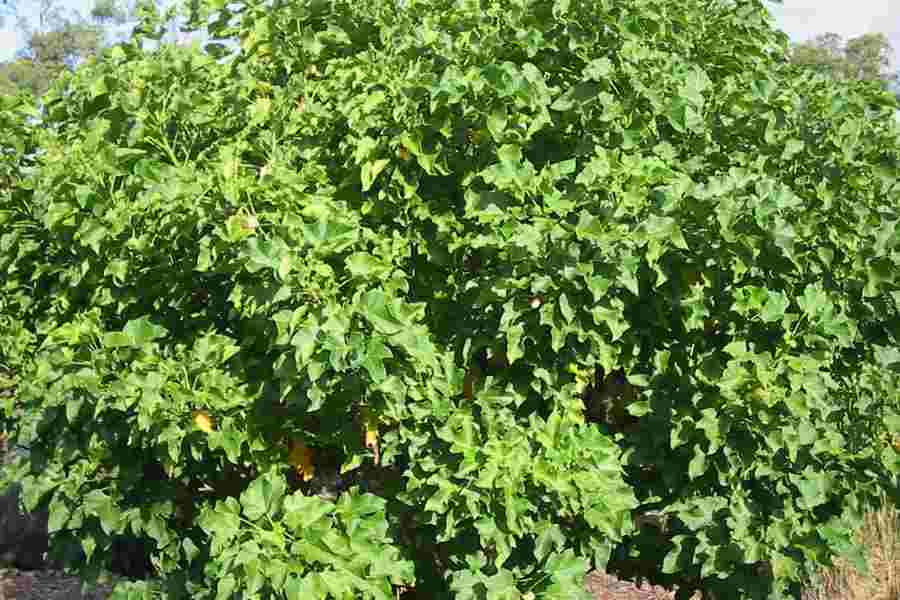Central Asia’s Vast Biofuel Opportunity
The recent revelations of a International Energy Administration whistleblower that the IEA may have misshaped essential oil forecasts under intense U.S. pressure is, if real (and whistleblowers hardly ever come forward to advance their professions), a slow-burning thermonuclear surge on future international oil production. The Bush administration’s actions in pressuring the IEA to underplay the rate of decline from existing oil fields while overplaying the possibilities of finding new reserves have the potential to toss governments’ long-lasting planning into mayhem.

Whatever the truth, rising long term worldwide demands appear specific to outstrip production in the next years, specifically given the high and increasing costs of developing brand-new super-fields such as Kazakhstan’s offshore Kashagan and Brazil’s southern Atlantic Jupiter and Carioca fields, which will require billions in investments before their first barrels of oil are produced.

In such a situation, additives and replacements such as biofuels will play an ever-increasing function by extending beleaguered production quotas. As market forces and increasing prices drive this technology to the leading edge, among the richest potential production locations has been totally neglected by investors up to now – Central Asia. Formerly the USSR’s cotton “plantation,” the region is poised to become a significant player in the production of biofuels if sufficient foreign investment can be acquired. Unlike Brazil, where biofuel is produced mostly from sugarcane, or the United States, where it is mainly distilled from corn, Central Asia’s ace resource is an indigenous plant, Camelina sativa.
Of the previous Soviet Caucasian and Central Asian republics, those clustered around the shores of the Caspian, Azerbaijan and Kazakhstan have actually seen their economies boom due to the fact that of record-high energy costs, while Turkmenistan is waiting in the wings as an increasing manufacturer of gas.
Farther to the east, in Uzbekistan, Kyrgyzstan and Tajikistan, geographical seclusion and fairly little hydrocarbon resources relative to their Western Caspian next-door neighbors have actually mainly inhibited their ability to capitalize increasing global energy needs already. Mountainous Kyrgyzstan and Tajikistan remain mostly reliant for their electrical needs on their Soviet-era hydroelectric facilities, but their increased need to produce winter electrical energy has resulted in autumnal and winter water discharges, in turn significantly impacting the farming of their western downstream next-door neighbors Uzbekistan, Kazakhstan and Turkmenistan.
What these 3 downstream nations do have however is a Soviet-era legacy of agricultural production, which in Uzbekistan’s and Turkmenistan case was mainly directed towards cotton production, while Kazakhstan, starting in the 1950s with Khrushchev’s “Virgin Lands” programs, has ended up being a significant producer of wheat. Based upon my discussions with Central Asian federal government authorities, offered the thirsty demands of cotton monoculture, foreign propositions to diversify agrarian production towards biofuel would have great appeal in Astana, Ashgabat and Tashkent and to a lower degree Astana for those hardy financiers ready to bank on the future, particularly as a plant native to the region has currently shown itself in trials.
Known in the West as incorrect flax, wild flax, linseed dodder, German sesame and Siberian oilseed, camelina is drawing in increased scientific interest for its oleaginous qualities, with several European and American business already examining how to produce it in industrial amounts for biofuel. In January Japan Airlines undertook a historical test flight using camelina-based bio-jet fuel, becoming the very first Asian carrier to try out flying on fuel derived from sustainable feedstocks throughout a one-hour demonstration flight from Tokyo’s Haneda Airport. The test was the conclusion of a 12-month evaluation of camelina’s functional performance ability and possible commercial practicality.
As an alternative energy source, camelina has much to recommend it. It has a high oil content low in saturated fat. In contrast to Central Asia’s “king cotton,” camelina is drought-resistant and immune to spring freezing, requires less fertilizer and herbicides, and can be utilized as a rotation crop with wheat, which would make it of particular interest in Kazakhstan, now Central Asia’s significant wheat exporter. Another perk of camelina is its tolerance of poorer, less fertile conditions. An acre planted with camelina can produce approximately 100 gallons of oil and when planted in rotation with wheat, camelina can increase wheat production by 15 percent. A lot (1000 kg) of camelina will consist of 350 kg of oil, of which pressing can draw out 250 kg. Nothing in camelina production is squandered as after processing, the plant’s debris can be utilized for livestock silage. Camelina silage has a particularly appealing concentration of omega-3 fats that make it an especially great livestock feed prospect that is recently gaining acknowledgment in the U.S. and Canada. Camelina is fast growing, produces its own natural herbicide (allelopathy) and completes well versus weeds when an even crop is established. According to Britain’s Bangor University’s Centre for Alternative Land Use, “Camelina might be an ideal low-input crop suitable for bio-diesel production, due to its lower requirements for nitrogen fertilizer than oilseed rape.”
Camelina, a branch of the mustard household, is native to both Europe and Central Asia and barely a brand-new crop on the scene: archaeological evidence shows it has been cultivated in Europe for at least three millennia to produce both vegetable oil and animal fodder.
Field trials of production in Montana, presently the center of U.S. camelina research study, showed a vast array of results of 330-1,700 lbs of seed per acre, with oil content differing between 29 and 40%. Optimal seeding rates have actually been determined to be in the 6-8 pound per acre range, as the seeds’ little size of 400,000 seeds per lb can develop issues in germination to attain an optimal plant density of around 9 plants per sq. ft.
Camelina’s capacity could enable Uzbekistan to begin breaking out of its most dolorous legacy, the imposition of a cotton monoculture that has distorted the nation’s efforts at agrarian reform considering that accomplishing self-reliance in 1991. Beginning in the late 19th century, the Russian government determined that Central Asia would become its cotton plantation to feed Moscow’s growing fabric market. The process was sped up under the Soviets. While Azerbaijan, Kazakhstan, Tajikistan and Turkmenistan were likewise ordered by Moscow to sow cotton, Uzbekistan in specific was singled out to produce “white gold.”
By the end of the 1930s the Soviet Union had actually ended up being self-dependent in cotton; five years later on it had ended up being a major exporter of cotton, producing more than one-fifth of the world’s production, concentrated in Uzbekistan, which produced 70 percent of the Soviet Union’s output.
Try as it might to diversify, in the lack of alternatives Tashkent stays wedded to cotton, producing about 3.6 million lots annually, which brings in more than $1 billion while constituting around 60 percent of the country’s hard cash earnings.
Beginning in the mid-1960s the Soviet government’s instructions for Central Asian cotton production mostly bankrupted the region’s scarcest resource, water. Cotton uses about 3.5 acre feet of water per acre of plants, leading Soviet organizers to divert ever-increasing volumes of water from the region’s 2 primary rivers, the Amu Darya and Syr Darya, into ineffective irrigation canals, leading to the remarkable shrinkage of the rivers’ final destination, the Aral Sea. The Aral, once the world’s fourth-largest inland sea with a location of 26,000 square miles, has shrunk to one-quarter its original size in among the 20th century’s worst environmental disasters.
And now, the dollars and cents. Dr. Bill Schillinger at Washington State University just recently described camelina’s business model to Capital Press as: “At 1,400 pounds per acre at 16 cents a pound, camelina would generate $224 per acre; 28-bushel white wheat at $8.23 per bushel would amass $230.”
Central Asia has the land, the farms, the irrigation infrastructure and a modest wage scale in contrast to America or Europe – all that’s missing out on is the foreign investment. U.S. financiers have the money and access to the competence of America’s land grant universities. What is specific is that biofuel’s market share will grow in time; less particular is who will gain the benefits of developing it as a feasible issue in Central Asia.
If the current past is anything to pass it is not likely to be American and European financiers, fixated as they are on Caspian oil and gas.
But while the Japanese flight experiments suggest Asian interest, American financiers have the scholastic know-how, if they want to follow the Silk Road into establishing a new market. Certainly anything that decreases water usage and pesticides, diversifies crop production and improves the great deal of their agrarian population will get most mindful factor to consider from Central Asia’s federal governments, and farming and vegetable oil processing plants are not only much less expensive than pipelines, they can be built quicker.
And jatropha curcas‘s biofuel potential? Another story for another time.




